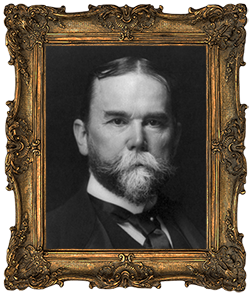The Matriarch of Salem Indiana
In 1807, one year after the lands that became Washington County were officially surveyed, a group of Quaker men came to the area, from North Carolina, to seek out new lands to settle away from the slavery policies of the south. Two of these men, Samuel and William Lindley Jr., chose to settle near the Blue River settlement of Royse’s Lick. William and his wife, the former Mary Pitts, along with two young children, permanently relocated to the area the following year.
William and Mary constructed a simple hewn-log cabin, in what would later become the Blue River Quaker Community, where they lived for two years, before moving southwest down Blue River to the fork with Brock’s Creek. Here they would construct a fine two-story log cabin, approximately where the site of McDonald’s Restaurant is today, and have seven more children. After territorial legislation was passed, in December of 1813, to form a new county, of Washington, out of Harrison and Clark, the 5 commissioners appointed to select the county seat were instructed by the governor to meet at the home of the new county’s surveyor, William Lindley Jr., on January 17, 1814.
These men, led by Indiana Militia General, Marston G. Clark, headquartered themselves in the hospitality of the Lindley’s home, while they toured prospective sites for eight days. It is said that during these expeditions to various locations throughout our county that William Lindley never missed an opportunity to get in a good word about his favorite location of the land surrounding the forks of Blue River and Brock’s creek, or essentially his own back yard. He repeatedly reminded the commissioners that the land was the approximate center of the county and that it was easily accessible from every direction. He informed them that the intersecting waterways would provide an excellent location for mills and other industry and that within a mile radius there were at least 12 quality fresh water springs.
How much bearing Lindley’s influence had over the commissioners is lost to history, but they did inevitably choose the land he favored for the county seat. In a meeting at the Lindley home the commissioners agreed to purchase 160 acres from Benjamin Brewer and 14 acres from William Lindley Jr., south of Brewers land. After the decision was made and the land was purchased, the conversation quickly turned to what would be a suitable name for the future town.
Several suggestions were made amongst the men, but no agreement could be reached, when one of the commissioners asked Mrs. Lindley what her opinion was. Mary, who had endured an enormous amount of labor over the course of this selection process, with caring for their four children and her husband and catering to four houseguests, along with a tremendous amount of visitors stopping by, with their varying interests about the location of the county seat, stated without hesitation, “I would name it after our native town in North Carolina, Salem. You know it means the city of peace.”
All of the men present thought it was a fine and suitable choice, gallantly agreeing to Mary’s suggestion and affording her the honor of naming the town of Salem. Once the county was organized William and Mary’s home was used, from 1814 to 1816, as the county courthouse, while General DePauw was constructing the official one in the newly designed town square.
Mary Pitts is believed to have been born between 1788 and 1790, in Rowan County, North Carolina to Andrew Pitts and the former Elizabeth Margaret Braxton. She married William Lindley Jr. in 1806 and just two years later was living in what would become Washington County. The following year, her parents and their seven other children migrated here as well and spent a couple of weeks with William and Mary, in their little 3 room cabin, while Andrew selected his own land to settle.
After more Quakers began arriving in the area, Mary and William, at first attended Quaker services at the Lick Creek Meeting House, which was established in 1813, by William’s Uncle Jonathan Lindley, and now sits just across our border with Orange County. But by 1815, the Blue River Quaker Community had grown large enough to warrant its own meeting house and William Lindley Jr. was selected as one of the trustees. After land was donated by Matthew Coffin, the best timber was selected and taken to William’s saw mill, he had constructed in 1812, on the south bank of Blue River, to be cut and finished. It is safe to assume the couple were active members of the congregation and remained so even through the churches division in congregation, in 1828, converting to the Elias Hicks doctrines, while his older brother, Samuel and his family went with the Orthodox Friends.
William and Mary appear to have been very successful here amassing over 1,200 acres of land, in Washington Township, by 1833 and constructing and selling 2 to 3 separate mills. But during the cholera epidemic of 1833, when hundreds of Salem’s citizens were dying, the stagnant water, caused by the first dam William had constructed across Blue River was blamed for the rampant disease. During the terrible scourge, the couple packed up their 8 children and left Washington County, for newly opened lands in Illinois. Unfortunately, the mysteries of history have shrouded what exactly happened to the family after their departure. William Lindley Jr. reportedly died just 3 months after they left, in September, in Tazewell County, Illinois and is believed to be buried there. We believe Mary Pitts Lindley, the young circumstantial matriarch of Salem, Indiana, continued migrating northward with some of her children and died in Green County, Wisconsin, in the 1850’s.
While Mary seems to have faded quietly away into history, her legacy, in the city she named, continues to live on 201 years after the fact.


